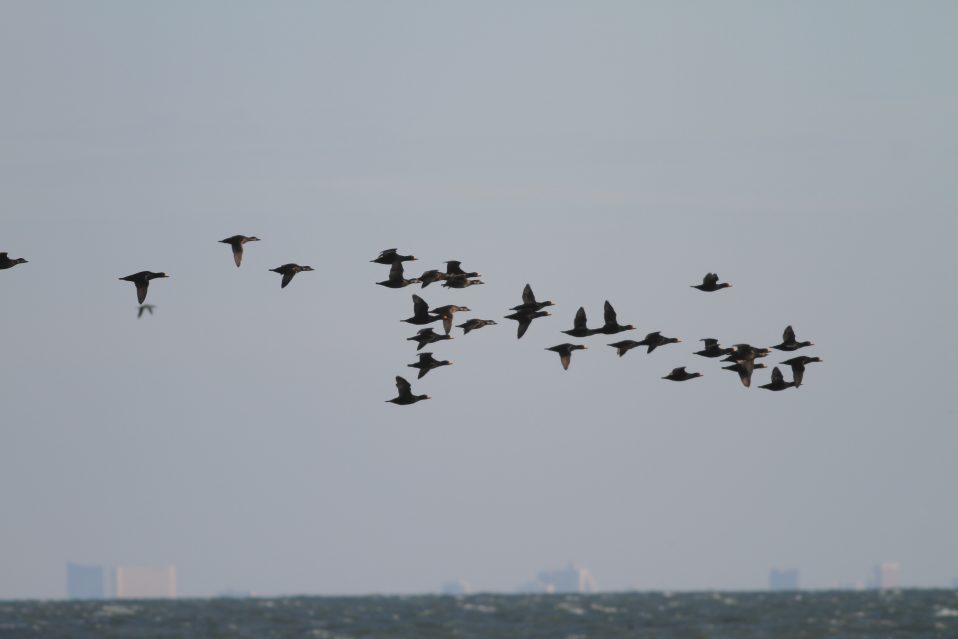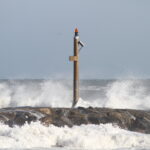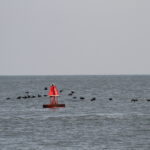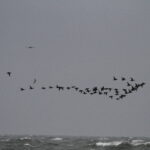This period started off slow but ramped up into quite a busy two weeks!
Wednesday the 11th was overall slow, with a little over 1000 gannets and over 150 Laughing Gulls, but only 400 scoters and 170 Red-throated Loons. The 12th was similarly slow, with only 400 gannets, 400 Laughing Gulls, and 200 scoters, but with a notable number of scaup—over 250 total. The 13th was only marginally more active, with nearly 500 cormorants and over 600 gannets.
The 14th was much better, with over 13,000 birds on the day. Over 3000 scoter was quite a good count for this point in the season, as was over 4000 Double-crested Cormorants. Over 2000 Red-throated Loons and 2800 gannets began the late season train of birds that we will be seeing for the rest of the month. A first-year Red-shouldered Hawk coming in off the water in the afternoon was my personal first for the Seawatch.

A Greater Scaup leading a flock of Surf Scoters.
While the 15th was headlined by over 5400 Black and 2700 Surf Scoters as well as 4000 Red-throated Loons, the real stars of the show were the 145 Common Eiders that came by in large flocks. This is the highest single-day Common Eider total for the Avalon Seawatch (to the best of my knowledge). At one point, up to 68 had accumulated between the 7th and 8th Street jetties, spending some time foraging, and within the hour, disappeared without me ever seeing them. There were simply eiders everywhere!
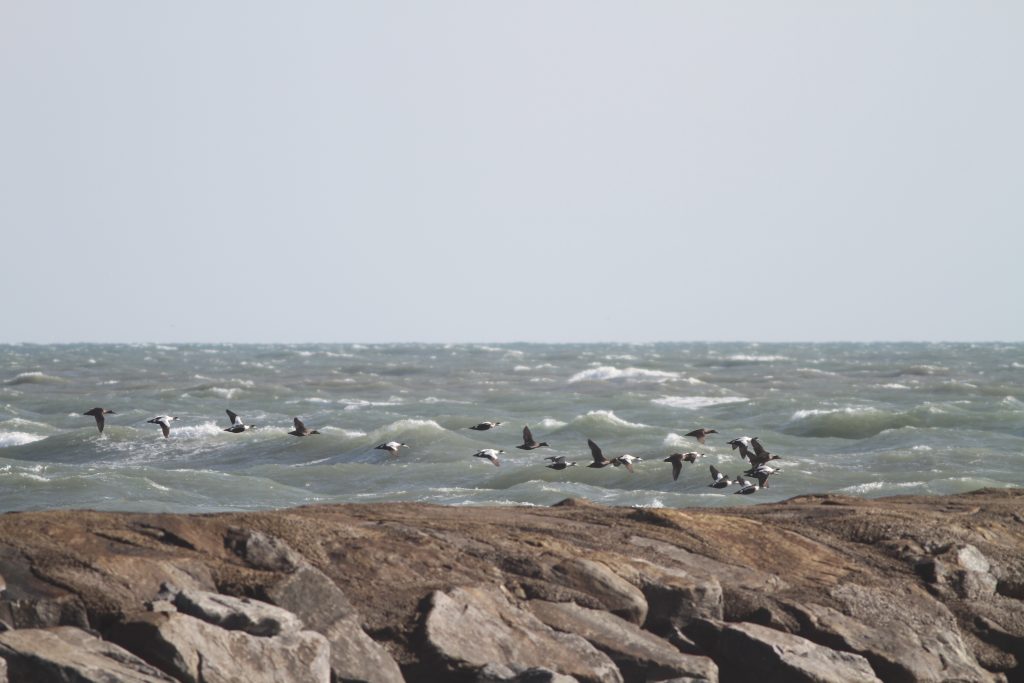
A flock of Common Eiders going by.
Tom had a great 16th and 17th with 17,876 and 11,806 birds, respectively. The 16th had 8447 Red-throated Loons, the largest day of the season yet. Notable rarities during these days include two Harlequin Ducks, two Black-legged Kittiwakes, six Ross’s Geese, a King Eider, and two Franklin Gulls. Two Humpback Whales were also seen moving south.
The 18th slowed down a bit with very strong NW winds nearing 20 mph, but over 3300 Northern Gannets and nearly 1000 Red-throated Loons were still moving south, as well as 2284 cormorants and a good push of 669 Ring-billed Gulls. The 19th brought some great diversity in ducks, with eight species of dabbling ducks, as well as both scaup and some Ring-necked Ducks. It also continued the trend of thousands of Black Scoters, Red-throated Loons, and Northern Gannets.
The 20th was all about gannets. Northern Gannets everywhere. 9141 were counted on the day, the largest single day gannet flight since 2015 and the 7th highest ever. The 21st continued this with another 4232. But the gannets were outdone by the Red-throated Loons with over 4600! And another 5000 Black Scoter pushed through, which is a rather good flight as we get this late into the season. While the 22nd was predominately Red-throated Loons and Black Scoters, there was also a notable gull movement with nearly 400 Bonaparte’s Gulls, 232 Laughing Gulls, and over 350 Ring-billed Gulls. There were also many dabbling ducks, with 18 American Wigeon, 17 Mallard, 51 American Black Duck, 7 Northern Pintail, and 168 Green-winged Teal.
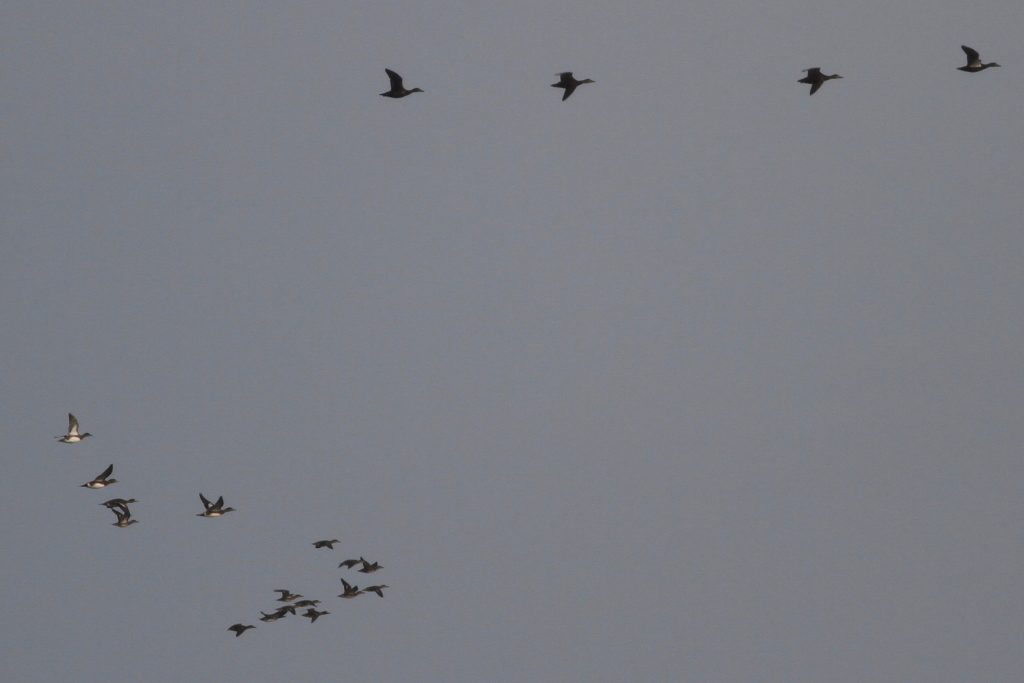
American Black Ducks (top right), American Wigeon (left), and Green-winged Teal (bottom left).
Tom continued the strong week into Monday/Tuesday with over 6600 Red-throated Loons and another 1000+ scoters and gannets on the 23rd. The 24th was slower, consisting primarily of 4100 Red-throated Loons, but notable was a slew of rarities such as two Harlequin Ducks, a Red-necked Grebe, two Black-legged Kittiwake, an Evening Grosbeak, a Common Redpoll, and another Humpback Whale.
The peak gannet and loon time didn’t fail to disappoint! At this point in the season, we already have over 700,000 birds, which would be a perfectly respectable season total in and of itself. With another month to go, who knows how many more birds we’ll get? Stay tuned!
-David Weber




